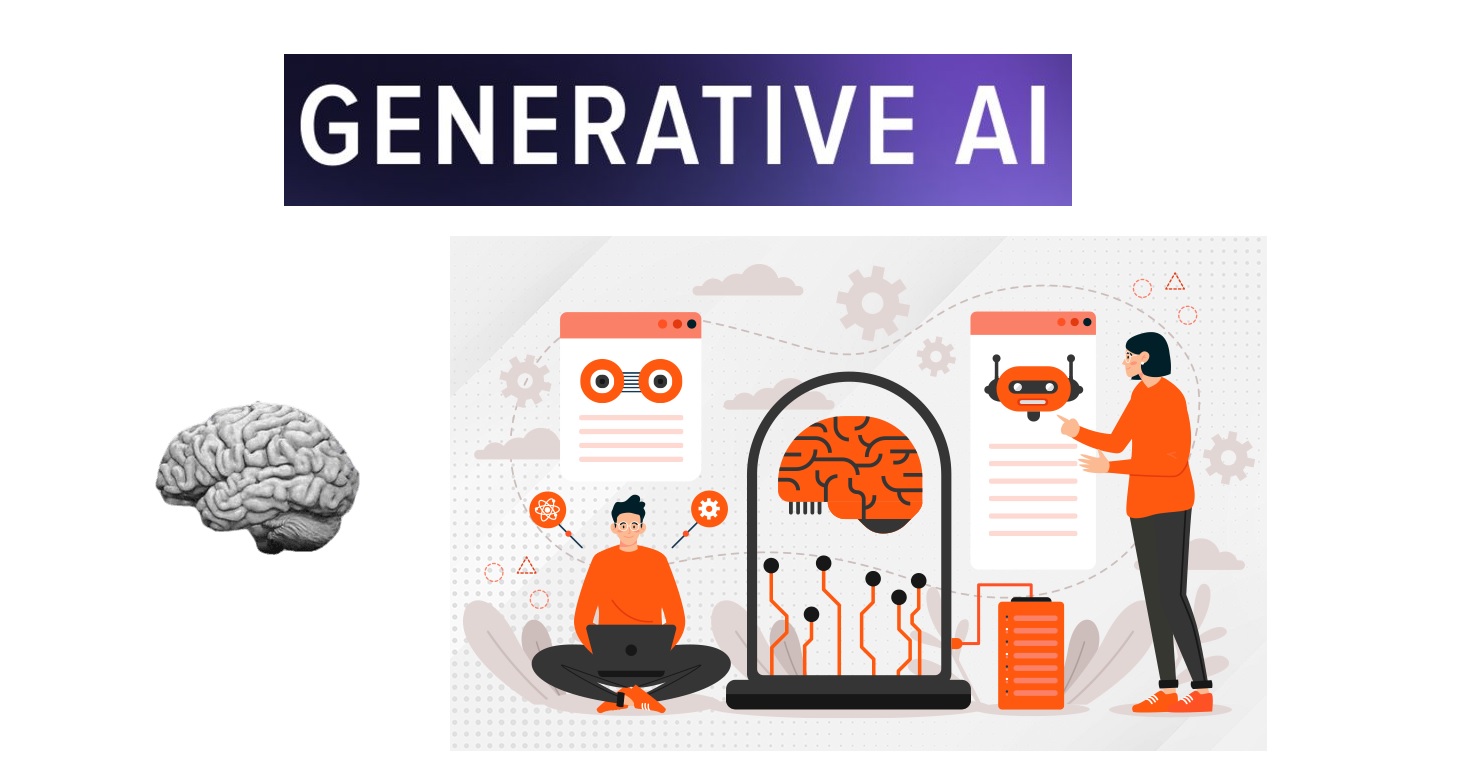Home » Generative AI

Generative AI refers to a type of artificial intelligence that can create new content or data, rather than simply analyzing or processing existing data. This is achieved using algorithms and machine learning models that can generate text, images, music, or other types of content based on patterns and trends identified in existing data. Generative AI is a rapidly advancing field that has applications in a wide range of industries, including art, music, advertising, and more.
Generative AI is a type of machine learning that involves training a model to generate new data that is like a given dataset. This is done by using a generative model, which is a type of neural network that can learn the underlying patterns and structure of the data.
Generative AI works by first training the generative model on a large dataset of examples. During training, the model learns to recognize patterns in the data and to generate new examples that are like the original dataset. Once the model is trained, it can be used to generate new data that is like the original dataset, but not identical. This is useful in a variety of applications, such as generating new images, music, or text. For example, a generative AI model could be trained on a large dataset of images of cats, and then used to generate new images of cats that look like the original dataset but are not exact copies. Generative AI has many potential applications in fields such as art, design, entertainment, and even medicine.
In art and design, generative AI can be used to create unique and interesting patterns, shapes, and colours that can be used in various forms of media. For example, a fashion designer could use generative AI to create new fabric patterns that have never been seen before. In entertainment, generative AI can be used to create music or sound effects that are unique and original. In medicine, generative AI can be used to create new drug compounds or treatment.
Generative AI is a branch of artificial intelligence that uses deep learning models to generate new data that resembles the training data. The technology behind generative AI is based on neural networks, which are designed to learn patterns in data and generate new data based on those patterns.
Generative AI models use a type of neural network called a generative adversarial network (GAN). GANs consist of two neural networks that work together: a generator network and a discriminator network. The generator network creates new data samples, while the discriminator network evaluates those samples to determine if they are real or fake. The two networks are trained together in a process called adversarial training, where the generator network tries to create more realistic data samples to fool the discriminator network, and the discriminator network tries to correctly identify real data samples from fake ones. This process continues until the generator network can create data samples that are indistinguishable from real ones.
Generative AI has many applications, including generating realistic images, videos, and text. It can also be used for creating music, designing products, and even generating new ideas in various fields. In the entertainment industry, generative AI can be used to create realistic special effects and animations. In the medical field, it can be used for drug discovery and personalized medicine. In finance, it can be used for fraud detection and risk analysis. The possibilities are endless, and as the technology continues to advance, we can expect to see even more innovative applications of generative AI in the future. However, it is important to note that there are also ethical concerns surrounding the use of generative AI, particularly in terms of privacy and potential biases in the data used to train the algorithms. As with any technology, it is important to approach its use with caution and consideration for its potential impact on society.
The tools of Generative AI typically include:
From
Dr. Manisha Vashisht
Associate Professor – CS & IT
Lingaya’s Vidyapeeth, Faridabad
June 15, 2023RECENT POSTS
CATEGORIES
TAGS
Agriculture Agriculture future AI Architecture artificial intelligence BA English BA Psychology BTech Engineering Business management career Career-Specific Education career guide Career Opportunities career option career scope Civil engineering commerce and management Computer Science Computer science engineering Data science degree education Engineering engineering college Engineering students English Literature english program Exam tips Fashion Design Fashion design course Higher Education Journalism journalism and mass communication law Law career Machine Learning MA Psychology Master degree mathematics MBA Mechanical Engineering Pharmacy Psychology Research and Development students
University Address: Nachauli, Jasana Road, Faridabad, Haryana
Toll Free: 1800-120-4613
Mobile : 8447744303 | 8447744304 | 8447744306 | 8447744309
Address: C-72, Second Floor, Shivalik, Near Malviya Nagar,
Above HDFC Bank, New Delhi 110017
Ph.No. - 011-46570515 / 45138169 / 41755703 / +91-7303152412
Jagmani Kutir, Ground Floor, Road No-1, Rajeev Nagar,
Near Darbar Marriage Hall, Patna-800024, Bihar
Contact No: 9818352069/8130120095
Mail: [email protected]
Copyrights © 1998 - 2025 Lingaya's Vidyapeeth (Deemed To Be University). All rights reserved.
It is important to note that the following email IDs and domains are fraudulent and do not belong to our university.
LV only conducts physical/online verification of any document related to examination on the following email id: